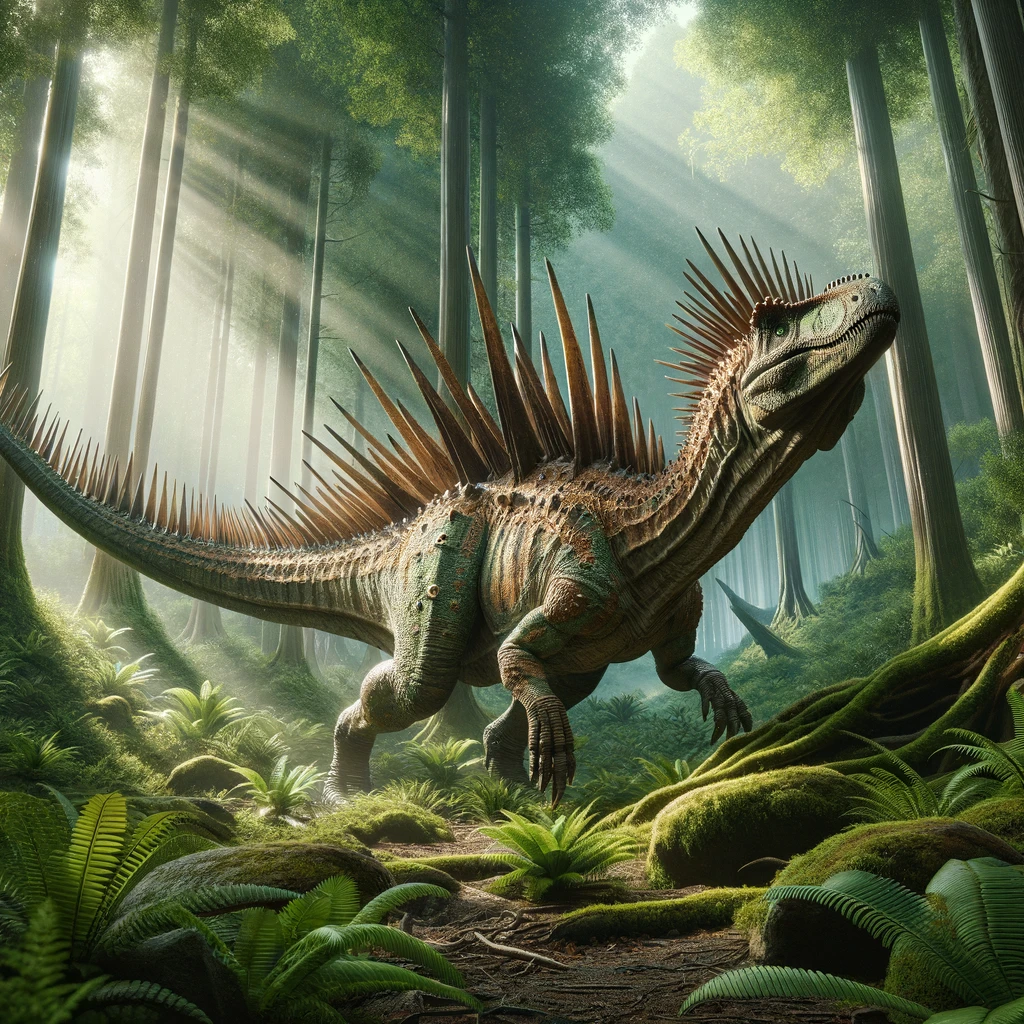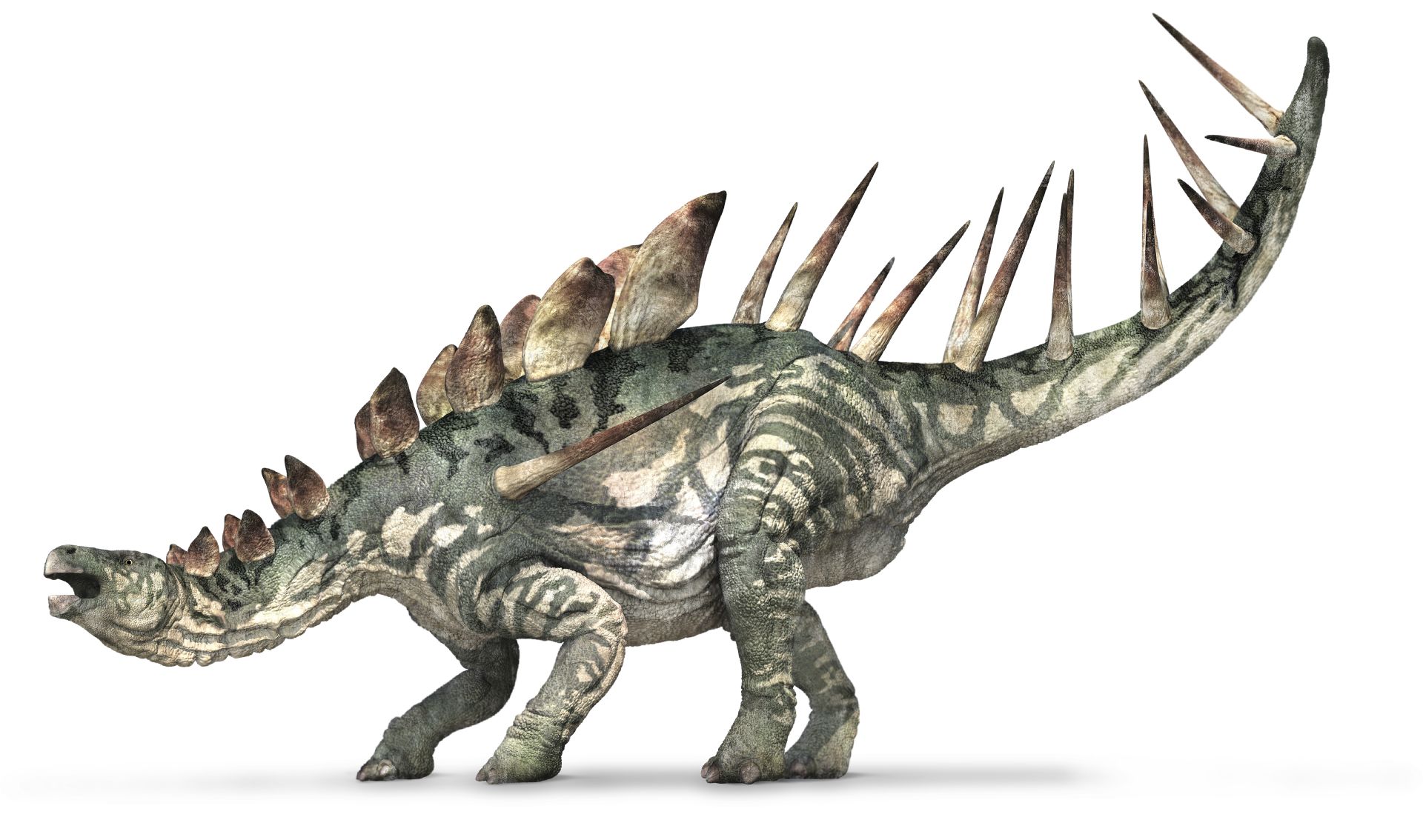Kentrosaurus–Discover Amazing Facts
Dinosaurs have always been a fascinating topic for both kids and adults alike. One of the popular species of dinosaurs is the Kentrosaurus. This armored dinosaur was in existence millions of years ago during the Late Jurassic period.
Although not as well-known as the mighty T-Rex or the long-necked Brontosaurus, the Kentrosaurus is a remarkable dinosaur that intrigued scientists and paleontologists alike. In this blog post, let’s discover more about Kentrosaurus and learn some exciting facts about this armored dinosaur.
Kentrosaurus–The Spike-Tailed Defender
Their distinct appearance made it stand out among other dinosaur species. Its most notable feature was the long spikes protruding from its tail, which were believed to protect it from predators. The spikes were about a meter long and stood out in two rows, making the bottom resemble a medieval mace.
Its body was covered with heavy scales that acted as a defense against attacks. Kentrosaurus was a bipedal animal, and its hind legs were longer and more robust than its front legs, enabling it to move faster and travel long distances.
Where Are They First Discovered?
Kentrosaurus remains were first discovered in Tanzania, East Africa, in the early 20th century. Further specimens were found in other parts of Africa, including Zimbabwe, Malawi, and South Africa. The name “Kentrosaurus” means “spiny lizard” in Greek, which refers to its sharp spikes. It is also believed that this Dinosaur may have been related to the more well-known Stegosaurus.
Most of these fossils were scattered and incomplete, but they were still integral in piecing together the characteristics and behaviors of Kentrosaurus. Some of the most well-preserved fossils were discovered in Germany, where visitors can still see a complete skeleton at the Museum of Natural History in Berlin.
Physical Characteristics
Kentrosaurus was a dinosaur with a unique spine configuration. Its back and tail were covered with long, sharp spikes that served as a defense mechanism against predators and in clashes with other Kentrosauruses for territory. The spikes were made of individual bones that fused to create a sturdy structure capable of warding off attackers.
Standing about three meters tall and six meters long, this Dinosaur was small compared to others in its time. One of its most notable features is its body armor that protects it from predators. The armor consisted of sharp spikes on its shoulders and back, also serving as a defense mechanism against potential attackers. Another unique physical characteristic of the Kentrosaurus was its deadly tail. The dinosaur had two rows of long and pointy spines extending from its tail, which could inflict severe injuries to any predator that tried to attack.
Diet
As an herbivore, Kentrosaurus mainly fed on low-lying vegetation, such as ferns and cycads. It would have required a significant amount of daily food to sustain its large, heavily muscled body.
Food Preferences
Kentrosaurus was a herbivore mainly fed on leaves, fruits, and other plants. It would use its sharp beak to shred vegetation and swallow it whole. Scientists believe the dinosaur may have been self-sufficient and independent, as it did not move around in herds. Being solitary allowed it to find its way to food sources more efficiently.
Habitat and Range
The Kentrosaurus lived in the Late Jurassic period, about 155 million years ago. It was widespread in areas now known as Africa, specifically Tanzania, Zimbabwe, and Kenya. The dinosaur used to thrive in a hot and humid climate, which provided an optimal environment for plant growth and vegetation restoration. Some scientists also speculate that they may have lived in forested areas, as its physical features could help it navigate through the thick foliage.
Evolution and Extinction
The Kentrosaurus belonged to a family of dinosaurs called Stegosauridae, known for their armored bodies and long tails with sharp spines. As the Late Jurassic period ended, they and a few other dinosaur species went extinct. Some experts believe that severe environmental changes, such as global warming and climate change, played a significant role in the mass extinction of these creatures.
Behavior
The Kentrosaurus was naturally social, and paleontologists have found evidence of herds containing both adult and younger individuals. As an herbivore, Kentrosaurus was not aggressive, and like most dinosaurs, it preferred to avoid confrontations with predators. The adults would likely have protected the young from potential predators, and the large spikes on their tails would have come in handy. They would also have had to contend with various herbivores in the same ecosystem, such as the Stegosaurus.
Interesting Facts
Kentrosaurus was a social dinosaur that lived in a herd. Researchers have found evidence in the fossil record suggesting the pack consisted of adults and juveniles. This behavior would have protected from predators and allowed the young to learn from their elders
What is interesting about Kentrosaurus is that it had an impressively tight torso, indicating it had excellent stability and balance. Its four sturdy legs were located directly below its body, allowing it to effortlessly support all of its weight. This feature was typical of herbivorous dinosaurs, as it helped them maintain their equilibrium while reaching for vegetation.
Conclusion
It’s safe to say that Kentrosaurus was an impressive dinosaur. From their fearsome armor plates to their massive long tails, Kentrosauruscertainly had a strong presence in the Cretaceous Period. Even though these creatures have not been around for millions of years, and their fossilized remains only hint at what Kentrosauruswere like, it is still possible to appreciate the fantastic diversity of the animal kingdom through these dino-giants.
Indeed, Kentrosaurus provides much appreciation and awe when you learn just how unique this beast indeed was. With its unforgettable appearance and remarkable body design, this carnivorous quadruped will continue to take center stage in all things dinosaur-related for many years. Who knows when another similar species might be discovered? Until then, explore and enjoy the wonders of Kentrosaurus!
Do you want to discover more about dinosaurs? Check out Discovering the Ferocious Carnivore

Top posts
related articles
Discover The Top 10 Longest Dinosaur Names
Dinosaurs, the ancient giants that once roamed the Earth, continue to capture our imagination. While
Discover the Amazing Dinosaur with 500 Teeth
Dinosaurs have always fascinated us with their colossal size, unique features, and intriguing mysteries. One
Acheroraptor – Tiny But Fierce Dinosaur
The dinosaur world is undoubtedly fascinating, and the relative discovery of the Acheroraptor is no
Amazing Cryolophosaurus- An Epic Tale
Cryolophosaurus, also known as the ‘Antarctic King’, was a fierce and fascinating dinosaur that existed
Discover Torosaurus And Its Mysterious Identity
Dinosaurs don’t exist anymore, but their fossils still fascinate us. Paleontologists scour the earth to
Corythosaurus–Exploring Its Wondrous World
The world of dinosaurs never stops fantastic us. From the huge T-rex to the tiny



